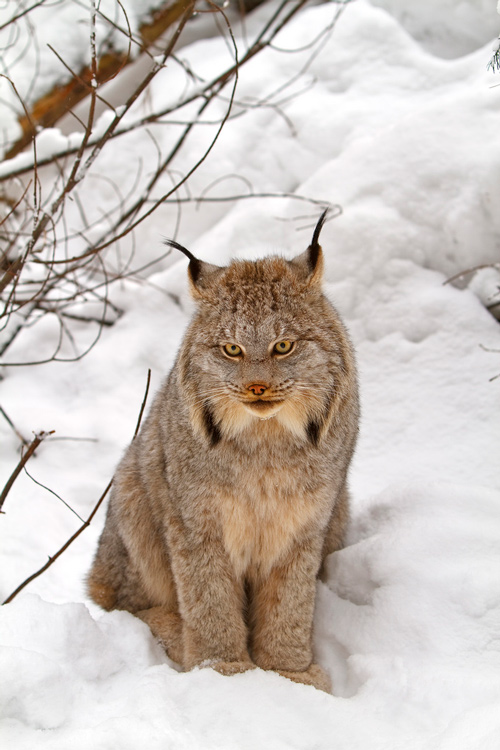An Awaxawi Hidatsa brings in fresh pronghorn meat with news of more, but the captains think it too cold to send hunters in pursuit. Guard duty is shortened to one-hour shifts and Clark lines his gloves and hat with lynx fur.
Clark’s Fur Lined Gloves
I line my Gloves and have a cap made of the Skin of the Louservia (Lynx) (or wild Cat of the North) the fur near 3 inches long
—William Clark
Too Cold to Hunt
a Indian Of the Shoe nation Came with the half of a Cabra ko kâ or Antilope which he killed near the Fort, Great numbers of those animnals are near our fort but the weather is So Cold that we do not think it prudent to turn out to hunt
—William Clark
Difficult Guard Duty
our Rooms are verry close and warm So we can keep ourselves warm and comfortable, but the Sentinel who Stood out in the open weather had to be relieved every hour all this day.—
—John Ordway
Weather Diary
Ther. at rise
Weather Wind at rise
Thert. at 4 P.M. Weather Wind at 4 P.M. River 38 below fair N 16 fair N —Meriwether Lewis[1]To assist the reader, the editor of this web page has omitted the date column, merged the “River” columns, and spelled out some abbreviations.
Fort Mandan is a High Potential Historic Site along the Lewis and Clark National Historic Trail managed by the U.S. National Park Service. The North Dakota Department of Parks and Recreation manages a modern reconstruction and the Lewis and Clark Interpretive Center located at US Hwy 83 and ND Hwy 200A.
Knife River Indian Villages National Historic Site is a High Potential Historic Site along the Lewis and Clark National Historic Trail managed by the U.S. National Park Service. A unit of the National Park System, the site is located at 564 County Road 37, one-half mile north of Stanton, North Dakota. It has exhibits, trails, and a visitor center.
Notes
| ↑1 | To assist the reader, the editor of this web page has omitted the date column, merged the “River” columns, and spelled out some abbreviations. |
|---|
Experience the Lewis and Clark Trail
The Lewis and Clark Trail Experience—our sister site at lewisandclark.travel—connects the world to people and places on the Lewis and Clark Trail.
Discover More
- The Lewis and Clark Expedition: Day by Day by Gary E. Moulton (University of Nebraska Press, 2018). The story in prose, 14 May 1804–23 September 1806.
- The Lewis and Clark Journals: An American Epic of Discovery (abridged) by Gary E. Moulton (University of Nebraska Press, 2003). Selected journal excerpts, 14 May 1804–23 September 1806.
- The Lewis and Clark Journals. by Gary E. Moulton (University of Nebraska Press, 1983–2001). The complete story in 13 volumes.




